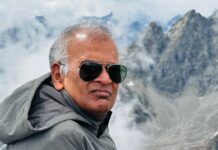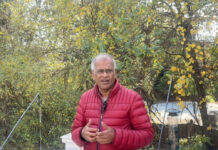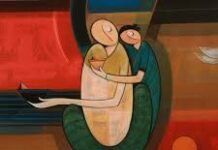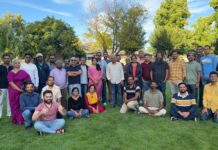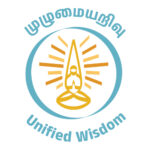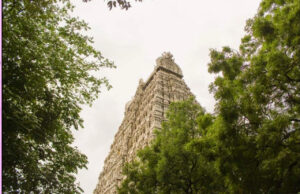
We can summarize this article. Religion is a Western concept. We are defining Hinduism based on this today. It has been represented by various names previously.
Hinduism has roots in pre-historical tribal life. There could have been hundreds of ancestral worship methods. They united to become cults. Then, cults merged to become religions. These religions combined became the Hindu religion.
A lot of sects and new worship traditions are constantly adding to Hinduism. New worship traditions and sects keep branching out as well. Two examples can be stated. Shirdi Saibaba worship is unique. It is worshipping an Islamic saint through Hindu customs. Today, it has merged with Hinduism. Shirdi Saibaba’s statue is seen in many Hindu temples. Vallalar distanced from Hinduism and formed the ‘Jothi’ (light) worship. It also remains under the umbrella of Hinduism as a separate sect.
In America, Jain deities are displayed within the Hindu temple premises. A plausible reason for this is that the Jain population is less there, and they cannot afford a separate temple. So, they display their deities in the Hindu temples. Hindus do not have any objection, and Jains do not have any problem. They could have settled within Hinduism after about two hundred years.
Some people establish that this great assimilation, philosophical expansion, flexibility, and inclusiveness is nothing but oppression and enslavement. They stand at the podium of religions that have a history of destroying and uprooting other religions with opposing ideologies. They preach this in educational institutions affiliated with those religions. We foolishly trust their propaganda and ask, “Is it true, Sir?”. We ought to feel ashamed for lethargy and irresponsibility if not for ignorance.
We can summarize the evolutionary history of Hinduism from the texts and evidence available to us. The Hindu religion we call today comprises six religions (Shaivism, Vaishnavism, Shaktism, Kaumaram, Sauram, & Ganapatya) and six Darshanas (Sankhya, Yoga, Nyaya, Vaiseshika, Poorva Mimamsa, & Uthar Mimamsa). It evolved through the debates between the six religions and the six Darshanas.
The picture of that debate is complex. It could be discussed only with people who have philosophical training and interest. Trying to discuss this with fools and political scumbags is dragging self and the ancestors through the mud.
Here is a small example for the interested people. Vaishnavism as a form of worship became a single sect during the Gupta period in the fifth century. The core mythology of Vaishnavism was formed, and Agama texts were written to outline the worship methods. Based on those, deities like Aniruddha, Balarama, and other minor deities were integrated into Vaishnavism.
The philosophical basis of the Vaishnavite worship tradition became clear after Sankara in the 7th century. In the six Darshanas, the sixth Darshana – Uthar Mimamsa or Vedanta philosophically strengthened Vaishnavism. Vaishnavism grew as Vishishtadvaita of Ramanuja, Dvaita of Madhva, Dvaitadvaita of Nimbarka, and Shuddhadvaita of Vallabha. Only after Vallabha of the 16th century, Vaishnavism evolved as the form we know today.
Similarly, among the six Darshanas, Sankhya, Yoga, and Vedanta, philosophically infused and advanced Shaivism. We then see the evolution of Shaivism in every century. The Shaivism we know today took form only after Meykandar in the 16th century.
It is not that these cults were independent religions, and they were made a single religion due to some conspiracy. No one can merge or separate religions like that. No one who knows little history would say that. Even when these worship methods remained as different sects, they belonged under the same umbrella.
Puranas like Vishnupurana, Agnipurana, and Brahmapurana are some of the oldest texts having information about the six religions. They all belong between the 3rd and 6th centuries. It is clearly stated in those texts that the six religions come under the same umbrella. The deities of the six religions were considered relatives. The philosophies of the six religions keep interacting with each other.
In the 7th century, Sankara philosophically united the six religions into a single system and created a tradition of saints following that system. It came to be called ‘Shanmata Sangraha’. Please note that he did not merge the six religions but brought together the six sects. That is, he united the belief systems of the six religions. Later in the 14th century, Sringeri chief priest Vidyaranya created a priestly tradition common to all religions.
Approximately for the past thousand years, Hinduism has been in its present form in India. A person could follow Shaivism or Vaishnavism within it. But they had to remain connected with other traditions as well. Temples dedicated to Shiva or Vishnu will have deities belonging to other sects.
In India, purists like Shaivites and Vaishanvites are very few. They probably come under a certain Sampradaya. Of the four Sampradayas, people belonging to Shri Sampradaya of Ramanujar pray to none except Vishnu. These restrictions do not apply to people from Rudra Sampradaya or the Kumara Sampradaya. People from Madhava Sampradaya take up priestly duties at temples belonging to other sects. Many Jain temples in Karnataka have Madhva Brahmins as priests.
In Shaivism, Veerashaivates pray to none except Shiva. In other sects, only people initiated into the religious teachings primarily pray to Shiva. There are no restrictions for the rest. People from Shaktism do not differentiate between Shiva and Vishnu. So, to say, if among the Indian population, around sixty crore Hindus are present, not more than five lakh people consider themselves Shaivites or Vaishnavites. The rest come under what we call today Hindus with the common worship tradition, and they pray to all deities.
The evidence of Hinduism being how it has been for the past thousand years is from the Silappatikaram text in Tamil. Aachiyar Kuravai and Vettuva Vari are mentioned in the same book. Was Kalidasa, who wrote Kumārasambhava and Raghuvaṃśa, a Shaivite or a Vaishnavite? Born in the Uvachar clan devoted to Kali, can we confirm whether Kambar, who wrote the Ramayana, was a Vaishnavite or Shakti worshipper?
Planned attacks are taking place against this giant structure. A divisive campaign is taking place in a unified way using all sorts of media. Whether a single voice is raising to say the truth against it? At least, is there even a whisper? Why not?
Many people know the truth, but they cannot voice it out. If they do, they will be subject to third-rated abuse, ridicule, and political oppression. So they fear. That is the current situation. I speak out, and every day, I am insulted and humiliated. I see hundreds of Hindus rejoicing in my attack as they are personally jealous of me.
Based on European thought after its introduction in India, the Hindu philosophical tradition was identified as a religion. Before them, the Indian administration rested with the Mughals. They commonly identified this tradition with the Persian word ‘Hindu’. So, the British administration continued the convention. Early researchers also used the same word. And that word came to be for this religion. If China had captured us, this tradition would have been called Lin-Duk. A group of people would have opposed it. They would claim that it was created by the Chinese. And that there was no such religion called Lin-Duk.
The word ‘Hinduism’ created confusion among the traditional scholars. There was already a definition agreed for ‘Madham’ (strong-sect) here. However, ‘Religion’ as an idea did not exist. This tradition was called the Dharma as a whole. So, traditional scholars dismissed the word Hinduism. They clarified that Shaivism and Vaishnavism only existed as religions. Many sages, including the monastic head of Kanchi, Chandrashekara Saraswati, have voiced this.
What they mean is that there is no rigid single structure and no single worship tradition for Hinduism. Shaivism and Vaishnavism can be rightly called a religion themselves. They did not understand that modern scholars group all these into a single umbrella and call it Hinduism.
They fear that if this tradition, called Hinduism, is made monotheistic in the future, Shaivism, Vaishnavism, and other cults may lose their individuality, and a single institution and a single ideology may emerge.
I have repeatedly written for the past two decades that their fear is justified and that a single system called ‘Hinduism’ should not be created. And all attempts to destroy the uniqueness of Hindu tradition have to be stopped.
There is a crevasse between what I say and the people who distinguish Shaivism and Hinduism completely. Hinduism has slowly unified in the past thousand years. Great saints from Sankara to Chidbhavananda initiated this unification. It is through continuous philosophical discourses and the sharing of spiritual wisdom that this unification and grouping has taken place.
The tradition of wisdom called Hinduism today has those discussions ingrained in every atom. All our temples are the reflection of this unification. And new deities formed out of this merger are yet another proof. In 2020, The chief monastic head of Shaivism, Dharmapuram Adheenam, has very clearly explained this. I shared the stage with him then. Even later, he has mentioned this strongly.
People who shout about the differences between Shaivism and Hinduism did not bother about Shaivism till yesterday. They do not know Shaivism. Many wanted Hinduism destroyed. And as part of that, they defend that Shaivism is not Hinduism.
To conclude, if you are a part of any sect or tradition within Hinduism, then you are a Hindu. Even if you are a part of any of the six Agasamayams or Purasamayams of Shaivism. Or if you belong to any of the four Sampradaya of Vaishnavism.
Hinduism is of three layers. Practical / Everyday Gods or folk deities (Kuladevatas / clan deities, kudumbadevatas / family deities, protective deities, and village deities) form the first layer. We begin by praying to the kuladevata or the kudumbadevata in any pooja or yagna we do today. Only then prayers to other deities are offered.
The great Gods make up the second layer. They are the primary deities of the six religions. Shiva, Vishnu, Shakti, Muruga, Ganapathy, & Surya. The next layer is of the pure philosophical god, Brahman. It is formless, beyond any form of knowledge or definition. Realizable but remains unknown. Whichever deity you worship out of these three, you are a Hindu.
We call Hinduism a Hindu religion based on today’s definition. Even as we say it, we know that religion connotes the Western meaning and is used so for the sake of present discussions. In some other context, we might call it the Dharma, the Way, or the Tradition. What we call Hinduism today has existed since ancient times. It keeps growing with the addition of new traditions every single day and expands through sub-sects.
Hinduism will keep evolving and expanding. What will remain and discarded shall be decided by our saints and explained by our scholars. Public speakers and politicians do not have to outline our religion.
Every time I say this, I also have to clarify certain things. When we say politicians should not define Hinduism, it implies for all politicians. If the Hindutvas who politicize Hinduism and its cultural aspects try to make it a single entity, deny the various sub-sects, and bring it under a single supremacy, we will strongly condemn it. It equals destroying Hinduism. We will also condemn those who split and distort Hinduism.
This traditional wisdom, called Dharma till yesterday and defined as religion today, has been thriving so far by incorporating various customs, traditions, and philosophical ideologies with their uniqueness. That diversity is the path shown to us by our sages and ancestors. Let us not lose it. Let us realize that, over time, our saints brought all these under a single umbrella. Finally, let us not forget that each of these has developed so far through mutual exchange.
(Conclusion)
Translated By Nikitha Chandrasekar

